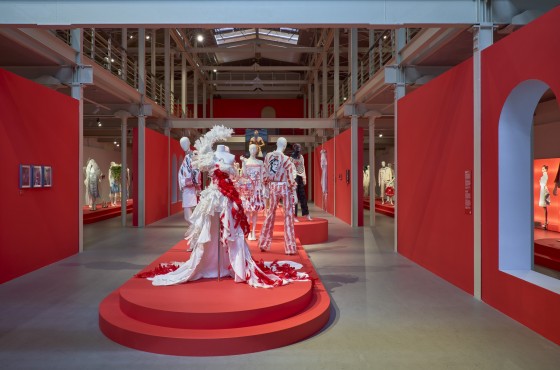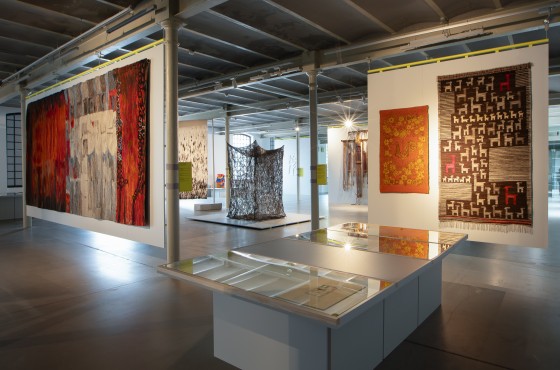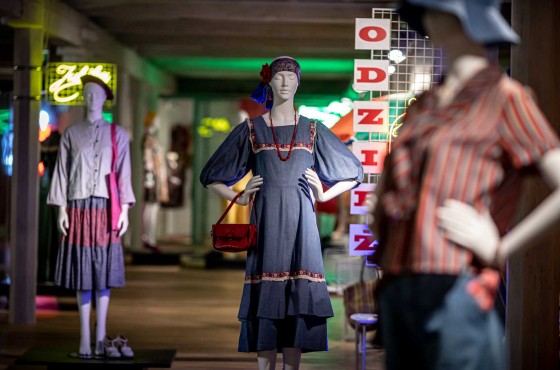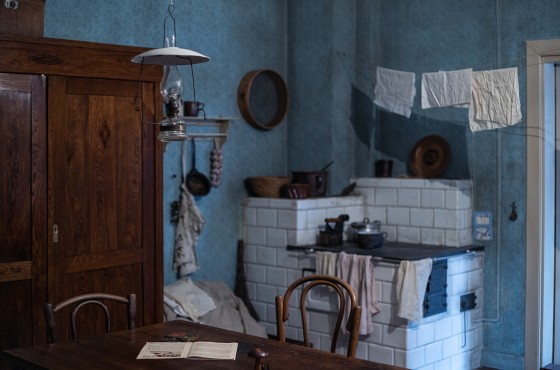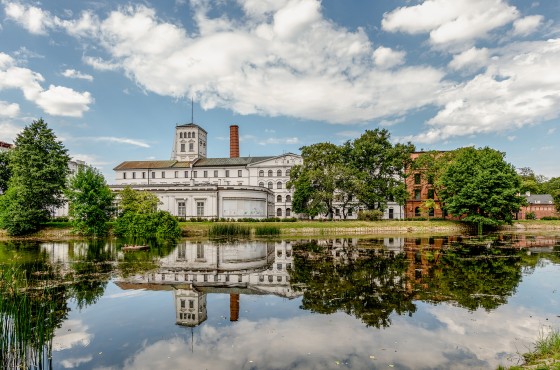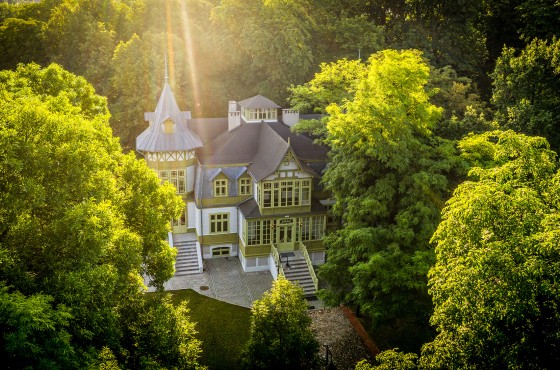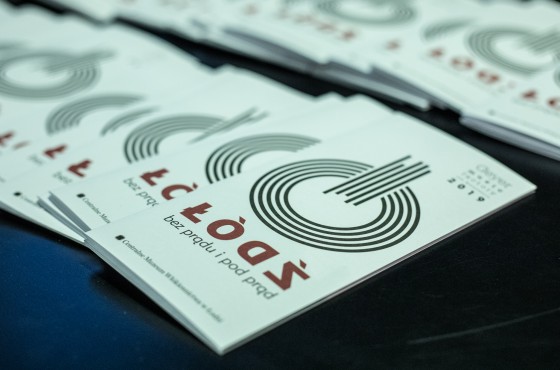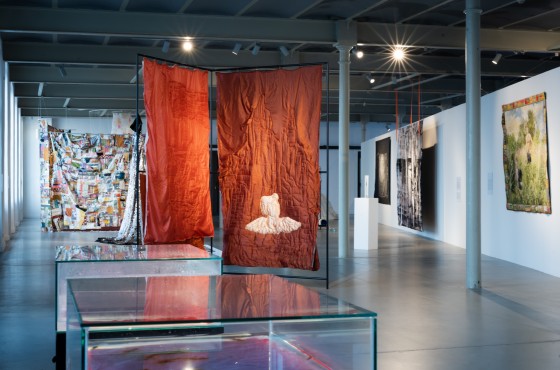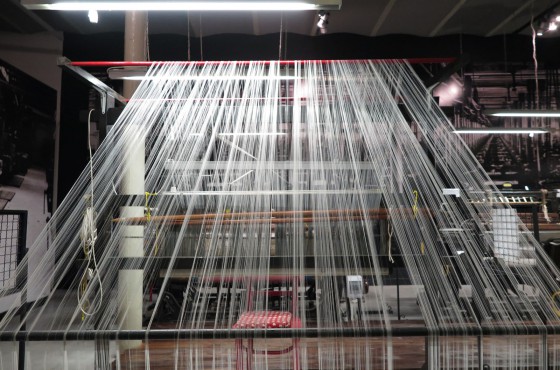The Last Summer 3

Leisure in Poland before WWII
Leisure time, vacations, and holiday trips are part and parcel of life for most of us. In their absence, we feel deprived of something or even fear for our mental and physical wellbeing.
However, the ideas of extended holidays and tourism for all are just a little over 100 years old in Poland.
Why is it that they emerged in the inter-war period of all times?
Here are the three main reasons.
In 1922, Poles were granted paid holidays. However, it took a few years before they got used to the new law. Initially, private employers were reluctant to give their employees holiday leave, and the employees themselves, fearing for their jobs, did not feel comfortable taking longer time off.
In the latter half of the 1920s, the now independent Poland was finally rising from post-war austerity. The main areas of social life had been restored and Poles were getting richer. The time had come to enjoy some “luxury”, such as holiday infrastructure. Holiday resorts, spas, rest houses, and marinas started to be renovated or built. In the mountains, there were more hiking trails and hostels. New travel agencies were set up. The road and rail network grew denser. At the same time, the creation of tourist infrastructure accelerated the recovery from the recession following the Great Economic Crisis.
Another reason was the state’s support and promotion of tourism. The authorities and the media promoted active leisure and sightseeing in the country. This was both a matter of citizens’ health and of patriotism in the form of travelling across the recently regained homeland. The example was set by Józef Piłsudski himself, who vacationed yearly in Druskienniki (now Druskininkai, Lithuania) on the Niemen River. The government subsidised train fares and holiday trips for children from poor families and supported tourist organisations which aimed to send as many citizens as possible on holiday.
As a result, in the 1930s Poles set off on holidays and sought leisure time in the countryside in droves. They would explore the Polish seashore and mountains as well as spend time in spas and suburban resorts. The wealthiest flew with LOT Polish Airlines or travelled abroad via Orbis.
In addition, Poles fell in love with cycling, kayaking, and skiing. In keeping with the new fashion, they were more and more daring in uncovering their bodies, exercising, and sunbathing. They joined rowing, kayaking, hiking, cycling, and automobile unions and clubs. In short, they enjoyed life and freedom, through tourism exploring their country and erasing the divisions of the partitions period.
P.S. If you want to learn more about pre-war holidays, you are welcome to visit the reading room one floor below, where you will find plenty of interesting resources on the subject.
Timeline
1920 – the Orbis Travel Agency is founded
1922 – paid holiday leave is introduced
1922 – a railway line to the Hel Peninsula opens
1926 – the Polish State Railways (PKP) is established (the legal status of Polish railways is regulated)
1926 – PKP introduces discounts for tourists, from 25% to 66%
1926 – the Polish Steamship Co. and the Polish Youth Hostel Association are established
1927 – the first guidebook on Poland for foreigners is published
1928 – inaugural season in Jurata, a new resort town called “the Polish Palm Beach”
1929 – Orbis becomes a state company; PLL LOT Polish Airlines is established (transformation of earlier air cooperatives)
1929 – the government appoints a special commission for tourism
1932 – the Department of General Tourism is established at the Ministry of Transportation
1931/1932 – a train for skiers, used as a movable {mobile?} hotel, is launched
1932 – first official celebration of Sea Day
1932 – National Parks are established in the Pieniny Mountains and Białowieża Forest
1933 – the Luxtorpeda railcar makes its inaugural journey from Krakow to Zakopane
1934 – the Union for the Propagation of Tourism is founded
1934 – the first flights depart from Okęcie Airport, the 430-metre pier in Orłowo opens
1935 – the League for the Promotion of Tourism is established
1936 – the cable car to Kasprowy Wierch summit opens
1938 – 220 youth hostels open with nearly 6,000 beds for young tourists
1938 – 136 chapters of Orbis cater to 5 million customers
1938 – Wielka Wieś – Hallerowo gets a port called Władysławowo
1939 – 2 million Poles go on vacation
1939 – Gdynia is visited by over 2,000 foreigners
POLES’ FAVOURITE DESTINATIONS BEFORE WWII
THE SEASIDE
After the country regained access to the sea, Poles were excited about trips to the Baltic. The easiest destinations to reach were Gdańsk (Danzig) and Sopot, with the latter already having a holiday town tradition and offering a large hotel base, a casino, tennis courts, horse riding competitions, and an elegant pier. However, as both of these towns were part of the Free City of Danzig, most of their inhabitants were Germans. Polish holidaymakers, therefore, also looked for alternatives, ones that were more patriotic and affordable.
New opportunities were created by the state and private investors. The flagship public project was the construction of the harbour in Gdynia, and growing next to the new city was the villa-filled resort district of Kamienna Góra. In Orłowo, adjacent to Sopot, sappers built a 430-metre-long pier to rival Sopot’s. In turn, the launch of the country’s strategic rail connection to the Hel Peninsula in 1922 quickly led to a tourism boom in the area. Holidaymakers started coming to Jastarnia, Hel, and Jastrzębia Góra. It was on the Hel Peninsula that the new resort of Jurata, known as the Polish Palm Beach, attracted artists, film and theatre stars, entrepreneurs, and politicians to its luxurious Lido Hotel. Polish President Ignacy Mościcki himself spent the entire summer of 1937 in Jurata.
Holidays on the Baltic Sea coast offered many attractions. The obvious ones were swimming in the waves (exercising due caution, as few Poles could swim at the time), lying on the beach, and sunbathing. People sunbathed in elegant basket chairs or on blankets and towels. Some beaches were equipped with booths with running water and showers. Adding to the appeal of the beach were beauty contests such as Miss of the Peninsula or Miss Most Tanned as well as wrestling, volleyball, and ping-pong tournaments. People could also enjoy pedal boating, kayaking, yachting, motor boating, water skiing, or simply take a cruise on a passenger ship or hydrofoil. Lighthouse tours were popular. In the evenings, holidaymakers enjoyed dance parties, open-air concerts, and games of bridge or billiards.
Already at that time, Poles complained about the steep prices at the seaside. Accommodation cost twice as much as in other parts of the country. There was, however, a way to afford a stay on the coast, through participation in the propagandic Festival of the Sea, held in Gdynia since 1932. It was possible to get there by kayak (there were many organised trips to choose from), by train or with a company excursion. The festivities included free military-style pea soup, accommodation in barracks or factories, a guided tour of the city, and a free return train ticket. In exchange, one had to turn up at a patriotic demonstration and wave a flag as a sign of joy at Poland’s newly regained access to the sea.
No matter how you got to the seashore, at the end of your stay it was customary to take some Baltic seawater home in a small bottle. This was a souvenir from a memorable holiday, which could also convince sceptics back in one’s hometown that seawater is indeed salty.
THE MOUNTAINS
Poles would go to the mountains to go backpacking, to get treatment at a spa, to ski or to support participants in winter sports competitions. It was possible to stay in a posh hotel, rent accommodation from the locals, hike with a tent, or bunk in a shelter.
The number of mountain shelters increased rapidly. Thanks to subsidies, several dozen of them were built in the 1930s, their inaugurations attended by important politicians (e.g., The Murowaniec hosted the President and the Marshal of the Senate). A key role in the construction of shelters, huts, and tourist accommodation stations was played by the Polish Tatra Society, which owned more than half of the accommodation base in the mountains before the war.
Thanks to the efforts of tourism officials (first Mikołaj Orłowicz, then Aleksander Bobkowski) and tourist organisations, many new trails were created, and maps and guides published. But the Polish mountains, especially in the east of the country, were still wild and deserted, and the traveller would often stand eye to eye with the beauty and perils of nature.
Mountain tourism had its own ethos and principles. Showing solidarity and helping each other on the trail was of prime importance. The beginner hiker got familiar with the mountains by taking part in trips organised by an experienced friend or by studying guidebooks. It was necessary to know how to read a map and how to divide the route into stages, how many kilometres to cover per day and at what pace, what to take as provisions and equipment, and even how to select hikers and look after their “state of morale”.
The mountains could also mean busy spa towns such as Krynica and Zakopane. The latter, being the capital of the Tatras, occupies a special place in Polish tourist mythology. Discovered by Tytus Chałubiński, Zakopane was popular even before Poland regained independence. It was associated with the artistic bohème led by Witkacy, debates of intellectuals in cafés, and the first Tatra climbers. It was also a vanity fair; its balls, casinos, and dance parties being second to none, the capital of the Tatras attracted the entire societal elite. In the 1930s, Zakopane grew more and more crowded. Taking the Luxtorpeda train from Krakow, you could get to the Podhale region in just over two hours. Tourists were additionally lured by the newly built cable car line to Kasprowy Wierch, a funicular to Gubałówka, and ski jumping competitions on the slope of Wielka Krokiew.
The mountains teemed with life in the winter, too. In the early 1930s, PKP Polish Rail offered discounts for skiers (also exploited for a time by women peddling eggs, cheese, and sausage, who would carry a pair of skis along with their baskets of produce and meat to be eligible for the discount). Launched for skiers was a special train – a kind of mobile hotel calling at different destinations. At that time, Polish skiing was more like hiking on skis than downhill skiing. As there were no ski lifts yet, in order to dash down a slope, you first had to climb a mountain (usually with a rucksack). Skis lined with “seals”, or strips of sealskin, were useful for this purpose. You also had to carry a ski repair kit.
The state was keen to develop year-round tourism. It trained highlanders to serve tourists, and built more ski lifts, funiculars, and slopes. In doing so, it ignored the warnings of nature conservationists. Ninety-four organisations unsuccessfully protested against the construction of the Kasprowy Wierch cable car. Since then, nature has repeatedly proved defenceless in the face of the triumphant march of innovation…
THE WATERS
Initially, a spa was a place where one could recuperate and receive treatment with mineral waters. This included Nałęczów, Muszyna, Krynica, Ciechocinek, and many locations bearing the name Zdrój, meaning spa.
In the 1930s, the term started to apply likewise to locations with unique medicinal value due to their climate. After all, the sun and the sea, and forest or mountain air could have a therapeutic effect. This is why the 1932 spa guide already described 100 locations, including popular resorts and summer destinations. There was a lot of marketing and… cunning. The spas were entitled to charge a tourist tax, while the visitors could enjoy reduced transport fares.
Spas were located in the mountains, along the seashore, and inland. There was a spa “cold pole” (Druskienniki, today Druskininkai, Lithuania) and a “hot pole” (Zaleszczyki). Holiday resorts near Warsaw (Otwock, Konstancin, Falenica) and those in the eastern parts of the country (Truskawiec, Worochta, Jaremcze) were extremely popular, as were the artist meccas (Zakopane and Kazimierz Dolny) and fashionable spas (Jurata, Hel, Jastrzębia Góra).
However, in the collective imagination, spas were (and still are!) synonymous with water drinking rooms, graduation towers, elegant parks, flowered promenades, and stylish villas. Such was the flair of Ciechocinek, a resort town with a long spa tradition and an ambition to be the Polish Monte Carlo. Elegance was also the hallmark of the popular town of Krynica, additionally made famous by concerts of Jan Kiepura and the luxurious Patria Hotel that he owned. Truskawiec, known for its sulphurous-saline waters and popular especially with the inhabitants of Lviv and the country’s cultural and political elite, tried to rival Krynica. Another favourite destination was Druskienniki, made popular by Józef Piłsudski, who visited the resort exceptionally often (allegedly not for its therapeutic mud but because of a young doctor named Eugenia Lewicka).
Spa towns really came alive in the summer, attracting tourists with orchestra concerts, acrobatics shows, dances, and sports competitions. The summer season was the longest and concluded as late as October in Zaleszczyki, the Polish spa with the most sunshine. The place was a magnet thanks to its sweet grapes, apricots, and watermelons and its nude beach area (not so much a bastion of personal freedom but a place to expose ailing kidneys to the sun).
In the off-season, the spas lost their grandeur and, to the disappointment of visitors, turned out to be small, sleepy towns. One exception was Krynica, whose administrators in the late 1920s introduced year-round facilities, building a ski jump, the county’s longest sled run, and a state-of-the-art ice rink. As a result, European and world championships were held here in the following decade and, despite the high prices, there was no shortage of tourists even in winter. Winter sports were also enjoyed in Zakopane and the much cheaper resorts to the east, e.g., Jaremcze and Worochta.
When you look at the number of spas, there can be no doubt that the interwar period democratised spa and sanatorium tourism.
IN SUBURBIA
The introduction of paid holidays in 1922 posed a dilemma: where should people spend their weeks off? Poles were told that, in order to stay healthy, they should leave their cramped flats and polluted cities and get as much exercise and sunshine as possible. Therefore, they started looking for places with clean air and walking trails, located close to the city and connected to it by public transport.
In response to this need, more and more summer resorts sprang up in the vicinity of urban centres, mostly in forests, by bodies of water, and in picturesque landscapes. There, it was possible to rent a wooden house, an entire villa or part of one, a room in a boarding house, or accommodation in a farmhouse. The cheapest option was to rent a house without any furnishings and so many families went to the summer resort with their own furniture, bedding, kitchen appliances, and cleaning products. It was also wise to take food with a longer shelf life and to buy only fresh produce from local farmers on site. After all, the range of goods on offer at the summer resorts was limited and prices much higher than in town.
The summer resorts were mainly used by the middle class and the so-called working intelligentsia. White-collar workers had the longest holidays, so they stayed in the countryside for several weeks straight. The set-up was ideal for entrepreneurs and freelancers, whose wives and children spent the summer in a healthy climate while they split their time between work in the city and a carefully rationed family life at the summer resort. An important element of holidaymaking for these social groups was visits and social gatherings in cafés or patisseries and dance parties. The dress code differed from that of the city and one could wear special pyjamas until 2 pm, but only on the premises of the summer villa. Special guides and articles published in the press offered tips on how to enjoy the holidays to the fullest.
Physicians recommended outings and breathing fresh air, especially for patients with cardio-vascular ailments and respiratory tract diseases, as well as those suffering from mental illnesses. There was widespread belief in the curative effects of the pine forest microclimate, which is why some summer resorts were given the status of spas. But even healthy vacationers tried to spend as much time as possible outdoors, in contact with nature. Hence the popularity of forest walks, water baths, sunbathing, lying on a porch, picnicking, and outdoor games. Evenings and rainy days, on the other hand, were ideal for reading, playing cards, chess or checkers, knitting, and engaging in political debates.
The summerhouses provided recreation for less well-off citizens, too. It was possible to find cheaper accommodation or to arrive by public transport on a Sunday. Summer camps for children and young people were organised in suburban towns and less affluent families received subsidies from the Association of Summer Camp Societies. Leisure was to be accessible to all, and healthy habits were formed from an early age.
ABROAD
In the 1930s, Polish tourism was decidedly patriotic. In the first half of the decade a mere 50,000 Poles went abroad, and not all of them as tourists. Few foreigners visited Poland. In the course of time, however, the situation changed.
LOT Polish Airlines expanded their international flight routes. One could fly to, e.g., Athens, Beirut, Berlin, Budapest, Helsinki, Tel-Aviv, and Rome. International flights were handled by the airport in Warsaw, but plane routes also connected Polish cities. Tickets cost an arm and a leg: a flight to Rome cost 300 zlotys, the equivalent of two monthly salaries for a blue collar worker. Moreover, trips took much longer; for example, a flight to Athens was 6 hours and 30 minutes. LOT was planning to launch routes to New York and Chicago and to expand its range of connections in the Middle East. Unfortunately, the outbreak of WWII foiled these plans.
International tourism was made possible by the Orbis travel agency. By 1939, it had set up 19 branches abroad. At the end of the decade, it offered short trips to places like Berlin, Budapest, Bucharest, London, Riga, Visby (Gotland), and longer ones to Palestine, Paris, and Varna. There were also two-week stays in Madeira and the Canary Islands organised for Christmas and Easter, which cost several average salaries. Only the richest customers could afford such trips, so most of Orbis’s revenue came from the sale of domestic getaways.
Voyages on board the ocean liners the Batory and the Piłsudski were a real luxury. The latter debuted in September 1935, and the Batory set out on her maiden voyage in April the following year, calling at 8 ports, in Dubrovnik, Barcelona, Casablanca, Funchal, Lisbon, London, Brunsbüttel, and Holtenau. Transocean liners regularly sailed to New York and along typical tourist routes (such as the Norwegian fjords and the Caribbean). They could accommodate 750 passengers. Poles mainly bought tickets in the cheapest class, while international passengers generally travelled in the more expensive class. The facilities included walking and sun decks, dining rooms, bars, a cinema, library, gymnasium, game rooms, swimming pool, children’s playrooms, and social lounges. There were shops, a postal agency, a hairdresser, a tailor, and even an on-board hospital. Passengers could dance to the accompaniment of an orchestra, the ship’s bakery offered fresh bread and sweet rolls every day, and a professional photographer immortalised the voyage. All you had to do was splash out a few tens of thousands of zlotys for a ticket...
Poles had more and more opportunities to discover the world, which were however available to the most affluent, unless we consider travelling abroad to include an illegal crossing of the Slovak border. This was especially popular among students hiking in the mountains, who would enter Slovakia to buy cheaper wine, oranges, figs, and raisins.



